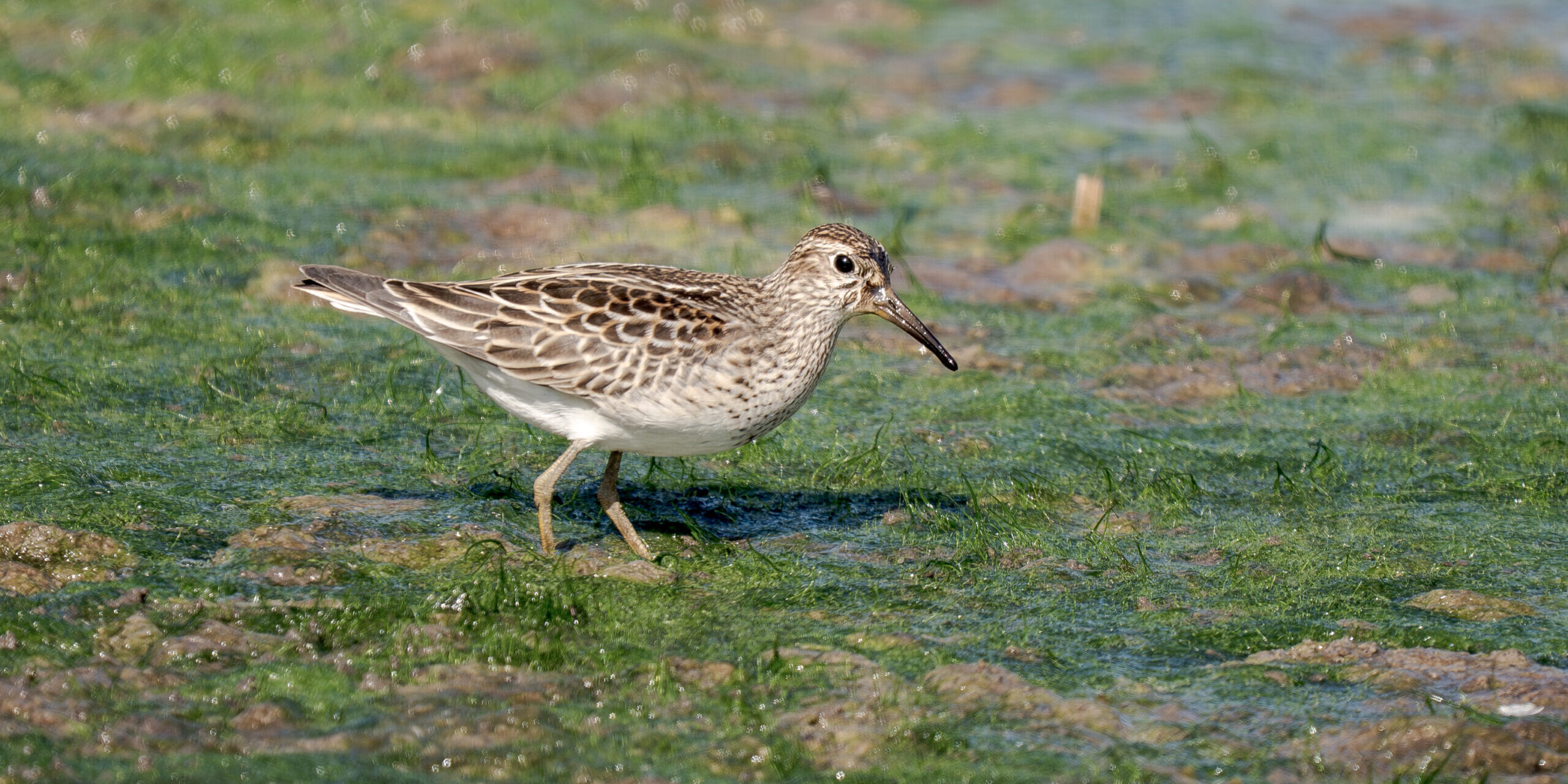Photo courtesy of Andrew Bailey
The Bird Wing group had an amazing day exploring the lakeshores and mud flats of Wellington County, with stops at Guelph Lake and Belwood Lake yielding a rich variety of birdlife. The weather was ideal—clear skies, mild temperatures, and just enough breeze to keep things comfortable. Altogether, members recorded 45 species, including nine species of shorebirds and two impressive kettles of Broad-winged Hawks soaring overhead.
The success of the day was due to the guiding skills of William Konze. He was incredibly skilled locating and identifying a variety of birds from considerable distance. His patience in directing all participants to view the birds was very much appreciated. William certainly demonstrated why he is one of the top young birders in the area.
Among the highlights were close views of a Pectoral Sandpiper just a few metres away, offering a rare opportunity to observe its streaked breast and deliberate foraging behaviour up close. The diversity of shorebirds was especially notable, with the following species making appearances:
Shorebird Highlights:
Killdeer: These well recognized shorebirds were quite abundant throughout our stops. With their strong black breast bands and distinct “kill-deer” call were hard to miss.
Semipalmated Plover: Smaller than the Killdeers, these compact plovers were seen foraging along muddy edges, easily recognized by their single black breast band and orange legs.
Solitary Sandpiper: True to its name, this lone bird was spotted at the waters edge, bobbing gently as it searched for prey.
Lesser Yellowlegs: Slender and graceful, these birds were active in shallow pools, their high-pitched calls occasionally ringing out.
Greater Yellowlegs: Larger and more robust than their lesser cousins, they were seen probing deeper waters with their long bills.
White-rumped Sandpiper (3 individuals): A treat for the group, these long-distance migrants were appreciated. Greyish long-winged peeps, whitish supercilium, white rump seen on the one bird in flight.
Least Sandpiper: The smallest of the peeps, these birds were busy along the shoreline, their yellowish legs helping distinguish them from similar species.
Pectoral Sandpiper: In addition to the close-up sighting, several others were seen moving steadily through grassy shallows.
Semipalmated Sandpiper: These compact sandpipers were abundant, often seen in mixed flocks with other peeps, their short bills and grayish plumage blending into the mudflats.
Bonus Sighting: American Pipit: A single pipitwas also observed, close the shore. Its subtle plumage and constant tail bobbing made it a charming addition to the day’s list.
For a complete list of the birds check out the Trip List: https://ebird.org/tripreport/411681
One member of the group, Marilyn Swaby, was very complimentary of the day:
What a wonderful way to spend a day birding with keen, kind and patient people in perfect weather. I came home feeling so peaceful and richer in bird lore.
Thanks to all who shared their experience today.
The outing was a reminder of the quiet richness that can be found in local habitats, especially during migration season. Bird Wing continues to foster appreciation for nature through shared experiences like these—where learning, observation, and community come together in meaningful ways.

